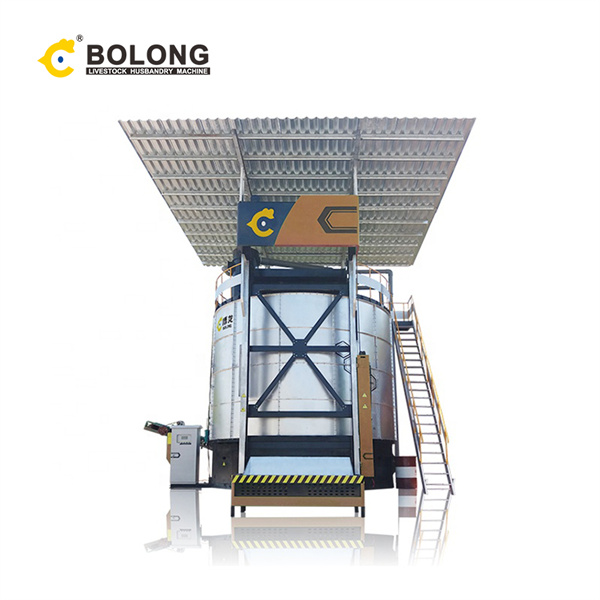
Jan 1, 2016 · This paper addresses the batch stirred bioreactor design for ethanol production with yeasts Saccharomyces cerevisiae under anaerobic conditions carried out to improve the performance of the fermentation process. A large, appropriate – sized fermenter is supposed 70 m 3. The operating volume is 52,5 m 3. Batch fermentation was perform with 200

May 4, 2023 · They provide a controlled environment where yeast can transform sugars into alcohol and carbon dioxide, resulting in the desired end product. In this article, we’ll explore the various types of fermenting tanks, their materials, and the factors to consider when choosing the right one for your needs.

May 23, 2024 · A bioreactor is a type of fermentation vessel that is used for the production of various chemicals and biological reactions. It is a closed container with adequate arrangement for aeration, agitation, temperature and pH control, and drain or overflow vent to remove the waste biomass of cultured microorganisms along with their products.

Apr 16, 2024 · These tanks provide a controlled environment where yeast converts sugars into alcohol and carbon dioxide, giving beer its alcohol content and carbonation. The design and material of fermentation tanks are critical to this process, with most modern tanks being made from stainless steel for its durability, cleanliness, and non-reactive properties.

2. Medium-temperature fermentation. This refers to biogas fermentation at a temperature of 30°C–35°C. This fermentation process has a faster digestion rate [generally above 1.0 m 3 / (m 3 liquid d)] and higher gas production rate and is more widely applied in practice. 3. Normal-temperature fermentation.

Next, we let the microbe grow in an optimal environment in a fermentation tank. The method is a bit like brewing. In both processes, microorganisms are fed sugar to produce the desired molecules. In beer brewing, the desired outcome is alcohol. In our fermentation tanks, it is egg protein.

This review gives the complete information about fermenter and parameters to be considered to enhance its productivity. Key words: Bioreactor, fermenter, impeller, sparger, and aspect ratio. *Corresponding Author: E-mail: Hitesh_medicine@yahoo.co.in. 1.

Sep 1, 2023 · 6. Storage: Post-fermentation, these tanks can also function as storage vessels, allowing the brew to age and develop further. It’s evident that fermenting tanks offer multifunctional capabilities, from ensuring an optimal fermentation environment to aiding in the maturation and storage of the final product.

Sep 12, 2022 · According to an analysis, a complex material comprising ethanol sludge, cake, and lipid waste was utilized in a thermophilic continuous stirred tank reactor (CSTR) for coproduction of bio-H 2 and bio-CH 4 . When compared to a single-stage methane fermentation, the two-stage anaerobic system recovered 10% more energy.

Apr 2, 2024 · Precision Control: One of the primary benefits of 100-gallon fermentation tanks is their ability to provide precise control over the fermentation process. Brewers and winemakers can monitor and adjust factors such as temperature, agitation, and aeration to ensure optimal conditions for yeast activity and flavor development.

Jul 1, 2007 · DOI: 10.1016/J.BIORTECH.2006.07.026 Corpus ID: 24979790; Assessing optimal fermentation type for bio-hydrogen production in continuous-flow acidogenic reactors. @article{Ren2007AssessingOF, title={Assessing optimal fermentation type for bio-hydrogen production in continuous-flow acidogenic reactors.}, author={Nanqi Ren and Hong Chua and S. Y. Chan and Yiu Fai Tsang and Ying Wang and N Sin

Jan 19, 2024 · Beer fermentation is a critical step in brewing where yeast converts sugars into alcohol and carbon dioxide. Proper temperature control, agitation, and yeast health optimization during fermentation ensures high quality, consistent beer output. Special fermentation tanks are used to provide optimum conditions for yeast activity.

Stirred-tank bioreactors Though many types of bioreactors exist, we will focus on stirred-tank bioreactors. The name is accurately descriptive. Cultivation takes place in the bioreactor tank—often called a vessel—and the culture is mixed by stirring (instead of shaking, for example). Stirred-tank bioreactors come in different sizes (for

Aug 31, 2023 · By delivering sterile air, the bubbler ensures optimum aeration in the fermentation tank. It is a mechanism that stimulates microbial growth and metabolism during fermentation.

Jan 7, 2021 · 2.8Optimizing growth variables. Experiments to analyze the effects of temperature (30, 35, and 40 °C) and pH (4, 5, and 6) on ethanol production were run using YPD under batch fermentation for 48 h [ 29 ]. Samples were taken at 5, 20, 27 and 48 h for ethanol analysis for yeasts inoculated in YPD containing 2% dextrose.